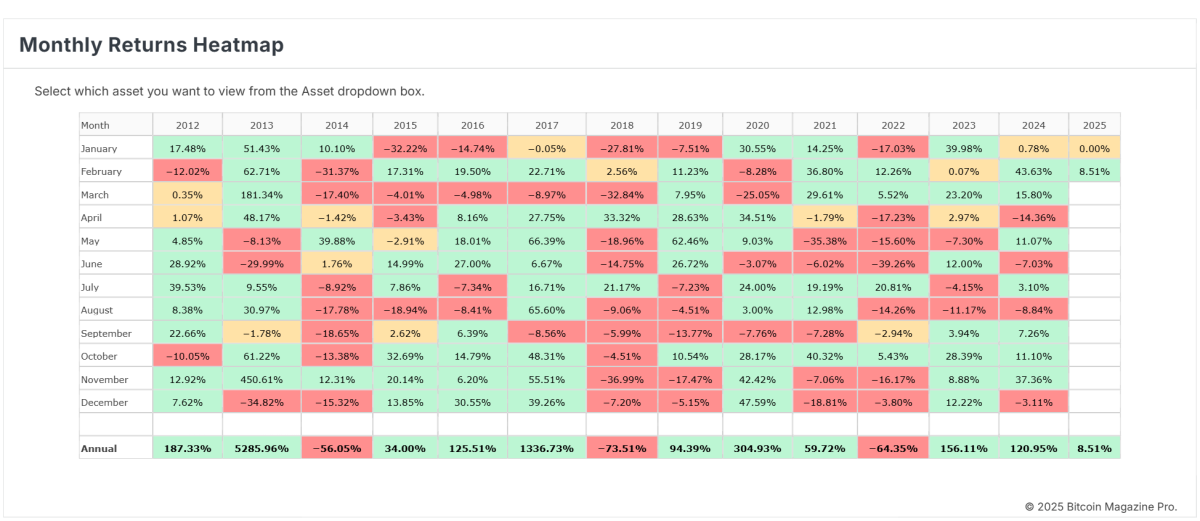Introduction to Artificial Intelligence
Artificial Intelligence (AI) refers to the simulation of human intelligence in machines programmed to think and learn like humans. This revolutionary technology encompasses a broad range of cognitive functions, including learning, reasoning, problem-solving, perception, and language understanding. The significance of AI in modern technology cannot be overstated, as it plays a crucial role in enhancing productivity and efficiency across various sectors.
The evolution of artificial intelligence can be traced back to its inception in the 1950s when pioneers like Alan Turing laid the groundwork for machine learning and cognitive computing. Initially restricted to basic rule-based systems, AI has undergone significant advancements, leading to the development of sophisticated algorithms that allow machines to learn from data. As a result, today’s AI systems can analyze vast amounts of information, derive patterns, and make informed decisions with minimal human intervention.
One of the defining attributes of AI is its ability to adapt and improve over time through methods such as machine learning and neural networks. Machine learning involves training algorithms on large datasets, enabling them to recognize trends and make predictions based on new data. Neural networks, inspired by biological neural networks, further enhance AI’s capabilities by processing information in layers, mimicking human thought processes. These forms of AI have opened new avenues for data analysis, making it possible to extract valuable insights that inform decision-making.
Understanding how AI machines process information is crucial for grasping their transformative impact on industries ranging from healthcare to finance. By leveraging AI’s capabilities, organizations can enhance their decision-making processes, leading to improved outcomes and a more data-driven approach in an increasingly complex world. As we delve deeper into the realm of artificial intelligence, it becomes evident that its role in enhancing decision-making will only continue to grow.
How AI Machines Process Information
Artificial Intelligence (AI) machines operate through a systematic approach that involves data input, processing, and output generation. At the core of this mechanism is the capability to receive vast amounts of data from diverse sources, including text, images, and sensor readings. This data is typically pre-processed to ensure that it is in a suitable format for further analysis. Data preprocessing may involve cleaning, normalizing, or transforming the data to eradicate inconsistencies and enhance its quality.
Once the data is prepared, AI machines employ various algorithms to process this information. These algorithms are the heart of AI, as they enable machines to learn from data, identify patterns, and make predictions or decisions. Machine learning, a subset of AI, plays a critical role here, as it facilitates the development of models that can learn autonomously from data inputs over time. These models are trained using historical data sets, allowing them to derive insights and make informed predictions.
Key technologies such as Natural Language Processing (NLP) and Computer Vision significantly enhance how AI machines interpret and analyze data. NLP enables machines to understand, interpret, and respond to human language in a way that is both meaningful and contextually relevant. This technology is essential for applications such as virtual assistants and sentiment analysis, where comprehension of human language is critical for accurate reasoning.
On the other hand, Computer Vision empowers AI machines to understand and process visual information from the world, enabling them to interpret images and videos. This technology finds application in various areas, including facial recognition, autonomous vehicles, and medical image diagnostics, where understanding visual data is essential for effective decision-making and operational efficiency.
Through these intricate processes, AI systems are equipped to transform raw data into valuable insights, thereby enhancing overall decision-making capabilities across different domains.
Data for Decision-Making
Artificial Intelligence (AI) has proven to be an invaluable tool in enhancing decision-making processes across various sectors. The types of data utilized by AI systems can be broadly categorized into structured and unstructured data. Structured data refers to information that is highly organized, typically stored in database formats such as tables or spreadsheets. Examples include customer names, transaction records, and demographic information. In contrast, unstructured data is more complex and does not follow a specific format. This category includes text data from social media, images, videos, and audio recordings. The ability of AI to analyze and interpret both forms of data significantly boosts its decision-making capabilities.
The quality and quantity of the data used in AI systems play a crucial role in determining the reliability of the insights generated. High-quality data is accurate, consistent, and relevant, while large quantities of data enable AI algorithms to identify patterns and trends more effectively. If the data fed into an AI model is flawed or insufficient, the resulting decisions may be misguided or erroneous. Thus, organizations must prioritize data quality management practices and assess their data collection methods to ensure they capture the necessary information for effective analysis.
Methods of data collection can vary widely, ranging from automated data gathering using sensors and IoT devices to manual data entry and surveys. Preprocessing techniques, which include cleaning, normalizing, and transforming data, are essential steps before AI models are trained. This stage helps in eliminating noise and inconsistencies, ensuring that the data presented to AI systems enhances their predictive accuracy. Ultimately, careful attention to data quality, quantity, and proper preprocessing are fundamental for organizations looking to leverage AI effectively in their decision-making processes.
AI in Action: Real-World Applications
Artificial Intelligence (AI) has emerged as a transformative force across various industries, fundamentally altering the approach to decision-making. In healthcare, AI technologies are utilized to analyze vast amounts of medical data, which aids in diagnosing diseases and recommending personalized treatment plans. For instance, IBM’s Watson Health leverages machine learning algorithms to process and analyze data from clinical studies, enabling healthcare professionals to make informed decisions based on the latest research and patient information.
In the finance sector, AI is revolutionizing risk assessment and investment strategies. Machine learning models analyze historical financial data to identify patterns, detect anomalies, and predict market trends. Companies such as JPMorgan Chase have implemented AI tools like COiN, which reviews legal documents and extracts critical data points within seconds, streamlining the decision-making process. This not only enhances efficiency but also minimizes human error, allowing financial experts to focus on strategy rather than mundane data analysis.
Furthermore, in marketing, AI is harnessed to optimize customer interactions and enhance targeted advertising. By analyzing consumer behavior and preferences through algorithms, companies can tailor their marketing strategies to meet specific customer needs. For example, Netflix utilizes AI algorithms to recommend shows and movies based on user viewing habits, thereby improving viewer satisfaction and retention rates. This application of AI in decision-making not only boosts sales but also fosters customer loyalty by delivering personalized experiences.
These examples reflect merely a fraction of AI’s potential across various sectors. The efficiency, precision, and adaptability offered by AI technologies significantly enhance decision-making processes, paving the way for more data-driven, strategic initiatives. As industries continue to embrace AI, the possibilities for improved operational effectiveness and profit maximization will only expand further.
Challenges and Limitations of AI in Decision-Making
While artificial intelligence (AI) has emerged as a powerful tool for enhancing decision-making processes, it is not without its challenges and limitations. One of the significant concerns is algorithmic bias, which occurs when the algorithms used to process data reflect societal prejudices or discriminatory practices. Such biases can lead to poor decision-making outcomes, perpetuating existing inequalities and reinforcing unjust practices within various fields, including hiring, law enforcement, and lending. Thus, the potential for algorithmic bias raises important ethical questions regarding the fairness of AI-driven decisions.
Another critical issue is data privacy. The efficacy of AI systems hinges on large datasets, often containing sensitive personal information. As organizations increasingly adopt AI for decision-making, they face heightened scrutiny concerning how they collect, store, and utilize data. Privacy breaches or unauthorized data usage can erode public trust and expose individuals to significant harm. Consequently, it is essential for organizations to implement robust measures to protect personal data and ensure compliance with privacy regulations.
Moreover, the potential for misinformation presents a severe challenge to the credibility of AI systems. AI algorithms often learn from vast amounts of information available on the internet, which can include false narratives and misleading content. The capacity of AI to inadvertently propagate misinformation not only undermines its reliability but also poses risks to decision-making processes that depend on accurate data. This increase in uncertainty necessitates a cautious approach to AI utilization in decision-making scenarios.
Lastly, while AI can augment decision-making capabilities, it should not entirely replace human oversight. The integration of human judgment is crucial to navigate the complexities of ethical considerations and contextual nuances that AI systems may overlook. Therefore, a balanced partnership between AI and human decision-makers is essential for ensuring that the limitations of AI do not compromise the quality and integrity of decisions made in various professional domains.
Ethical Considerations in AI Deployment
The rapid advancement of artificial intelligence (AI) presents a host of ethical considerations that must be addressed to ensure responsible deployment. As organizations increasingly rely on AI systems for decision-making, the question of accountability becomes paramount. Who is responsible when an AI system makes an error? Establishing clear lines of accountability is essential to navigate the complexities introduced by AI. This requires organizations to integrate ethical practices within their operational frameworks, ensuring that human oversight is maintained, particularly in critical applications such as healthcare, finance, and criminal justice.
Transparency is another vital ethical consideration. AI systems often operate as “black boxes,” making it difficult for users to understand how decisions are made. This lack of transparency can lead to mistrust and exacerbate biases if the data used to train these systems are not representative of the population they serve. Therefore, stakeholders must advocate for interpretability in AI models, allowing users to discern the reasoning behind decisions. By fostering transparency, developers can build confidence in AI deployments, ensuring that systems are not only efficient but also equitable.
Lastly, the social implications of relying on AI for decision-making warrant careful examination. As AI technologies become embedded in everyday practices, there is a risk that they may perpetuate existing inequalities and social divides. Moreover, over-reliance on AI could diminish critical human judgment skills, leading to significant consequences in areas such as law enforcement and employment. It is, therefore, crucial to develop robust ethical frameworks that consider these social impacts, ensuring that AI serves as a tool for empowerment rather than a source of harm. By prioritizing ethics in AI deployment, organizations can contribute to a more just and equitable society while harnessing the potential of artificial intelligence.
Future Trends in AI and Decision-Making
The landscape of artificial intelligence (AI) is continuously evolving, presenting numerous possibilities for enhancing decision-making processes across various sectors. One notable trend is the rise of explainable AI (XAI), which aims to demystify the often opaque nature of AI algorithms. By providing transparency into how AI systems arrive at specific conclusions or recommendations, XAI fosters greater trust and understanding among decision-makers. This transparency is particularly relevant in fields such as healthcare and finance, where the stakes are high, and the rationale behind AI-driven decisions must be clearly communicated.
Moreover, advancements in machine learning algorithms are strengthening AI’s capability to analyze vast datasets more efficiently and with higher accuracy. As these algorithms become more sophisticated, they will enable organizations to identify intricate patterns and make predictions with increased precision. This level of insight will likely transform traditional decision-making frameworks, allowing leaders to base choices on real-time data analytics rather than intuition alone. The development of more robust predictive models will facilitate proactive strategies, ultimately unlocking new avenues for business growth and operational efficiency.
Another trend to watch is the integration of AI with other emerging technologies such as blockchain and Internet of Things (IoT). The fusion of these technologies can lead to more secure and efficient data handling processes, thereby improving the quality of data available for AI applications. As AI systems become more adept at processing and interpreting information from connected devices, decision-making will also benefit from real-time insights, enhancing organizational responsiveness and agility.
As we look towards the future, it is evident that the continued evolution of AI technologies will fundamentally reshape decision-making paradigms. By harnessing innovations like explainable AI and enhanced machine learning techniques, organizations will be better equipped to navigate complex challenges and make informed decisions that drive success.
Integrating AI into Organizational Decision Processes
As organizations seek to leverage the potential of artificial intelligence (AI) for informed decision-making, it is imperative to adopt a strategic approach for its integration. The first step involves assessing the current decision-making frameworks within the organization to identify areas where AI can provide tangible benefits. By understanding existing processes, organizations can better determine where AI tools can enhance efficiency and accuracy.
Another critical factor in successfully integrating AI is the selection of appropriate AI tools that align with specific organizational needs. This requires a thorough evaluation of various AI technologies, including machine learning, natural language processing, and data analytics. Organizations should consider the capabilities of these tools and how they can be utilized to support objectives such as predictive analysis, automation of routine tasks, or improved customer insights. Additionally, engaging stakeholders throughout this selection process ensures that the chosen tools are not only technically sound but also user-friendly for team members.
Training is also paramount in making a smooth transition to AI-enhanced decision-making. Proper training programs should be established to equip employees with the necessary skills to operate new AI tools effectively. This includes familiarizing them with the functionalities of these tools and how to interpret the insights provided. Furthermore, creating a culture that encourages experimentation with AI will foster innovation and adaptability within teams, ultimately leading to more informed decisions.
Lastly, it is crucial to ensure that the integration of AI aligns with the overarching goals of the organization. This entails setting clear objectives for AI initiatives and monitoring the outcomes to measure their effectiveness. By doing so, organizations can refine their use of AI and continually adapt their decision-making processes, thereby maximizing the positive impacts of AI on organizational performance.
Conclusion: The Path Forward for AI and Decision-Making
As we have explored throughout this blog post, the integration of artificial intelligence (AI) into decision-making processes is rapidly becoming an essential strategy for organizations seeking to leverage data for improved outcomes. AI machines have the capability to analyze vast amounts of information at incredible speeds, offering insights that may not be immediately discernible to human decision-makers. This enhanced analytical ability not only aids in identifying trends but also in forecasting potential scenarios, thereby empowering leaders to make more informed and timely choices.
However, the path forward is not devoid of challenges. The reliance on AI decision-making tools raises concerns about data privacy, ethical considerations, and the potential for bias in algorithmic recommendations. It is crucial for organizations to establish robust frameworks for the ethical use of AI, ensuring transparency and accountability in how data is analyzed and decisions are made. Moreover, the potential for over-reliance on AI systems should be recognized, as human oversight remains a vital component of effective decision-making.
In navigating this complex landscape, continuous learning and adaptation will be key. As AI technology evolves, organizations must remain proactive in updating their strategies and frameworks to accommodate new developments. This involves not only investing in AI tools but also in training personnel to work collaboratively with these systems effectively. By embracing a culture of continuous improvement, organizations can ensure that they remain at the forefront of innovation while harnessing the full potential of AI in decision-making.
Overall, the synthesis of AI into organizational processes represents a significant opportunity to enhance decision-making capabilities. By addressing the challenges and committing to ethical practices, businesses can harness AI confidently and responsibly, paving the way for more strategic and impactful outcomes moving forward.










